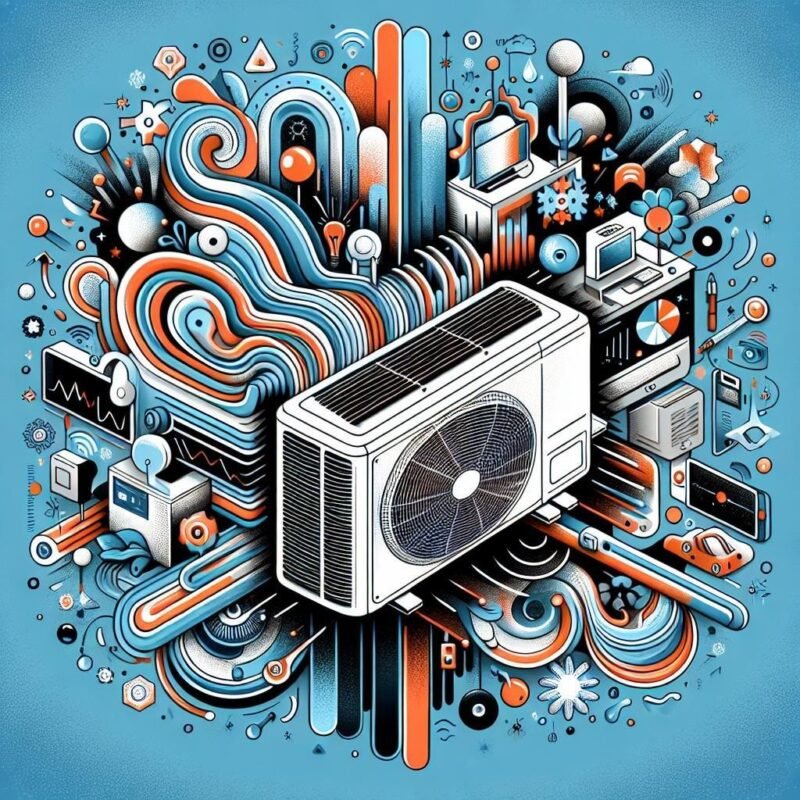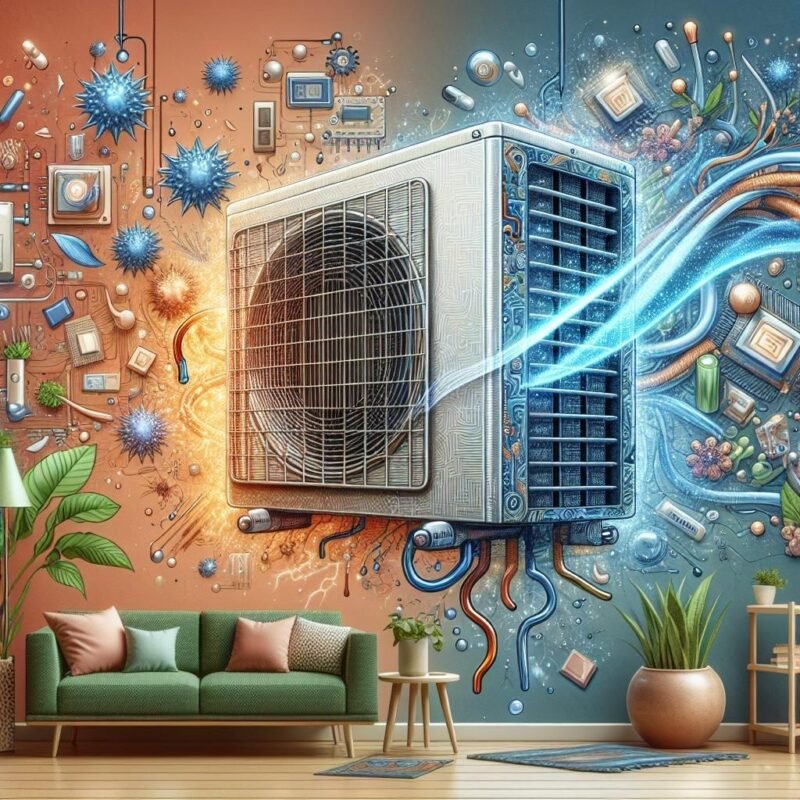Are there options for adding additional heating elements to a mini split AC system?

Picture this: your trusty mini split AC has been a faithful companion through scorching summers, but when winter’s chill creeps in, you find yourself yearning for more warmth than it can muster. like a Swiss Army knife that could use one more blade, many homeowners wonder if their mini split systems could pack an extra heating punch. As we dive into the world of HVAC innovations, we’ll explore the intriguing possibilities of supercharging your mini split’s heating game – because who says you can’t teach an old AC new tricks?
Boosting your Mini Split’s Heating Power: Smart Ways to Add Extra Warmth
When winter’s chill sets in, your mini split system might need a helping hand to maintain cozy temperatures throughout your space. Several clever enhancements can work alongside your heat pump to create the perfect indoor climate. Consider integrating a low-wattage ceramic heater near cold spots or installing radiant floor heating panels in frequently used areas. These supplementary options work harmoniously with your existing setup without overwhelming your electrical system.
Strategic placement of heat-boosting elements can transform your comfort level while maintaining the efficiency of your mini split system. Here are some proven combinations that deliver exceptional results:
- Infrared heating panels mounted on walls or ceilings
- Baseboard heaters for targeted warmth in problem areas
- Electric fireplace inserts for both ambiance and heat
- thermal storage solutions using ceramic elements
| Heating Add-on | Best Location | Energy Impact |
|---|---|---|
| Ceramic Panel | Living Areas | Low |
| Infrared Strip | Bathrooms | Minimal |
| Floor Mat | Bedrooms | Medium |
Understanding Supplemental Heat Options for Your Ductless System: From Base Pan Heaters to Auxiliary Units
Enhancing your mini split system’s heating capabilities becomes crucial during those bone-chilling winter months. Base pan heaters serve as your first line of defence, preventing ice formation and ensuring smooth operation when temperatures plummet. These compact heating elements sit beneath your outdoor unit, maintaining optimal performance even in harsh conditions. Meanwhile, strip heaters can be integrated into your indoor air handler, providing that extra warmth boost when you need it most.
For those seeking comprehensive heating solutions, several supplemental options deserve consideration:
- Auxiliary heating coils that seamlessly integrate with existing ductless units
- Battery-powered heating elements for emergency backup during power outages
- Smart-controlled supplemental units that automatically activate based on temperature thresholds
- dual-fuel systems combining heat pump technology with choice heating sources
| Heat Option | Energy Usage | Installation Complexity |
|---|---|---|
| Base pan heater | Low | Simple |
| Strip Heater | Medium | Moderate |
| Auxiliary Unit | High | Complex |
Creative Solutions to Enhance Mini Split Heating Performance in Extreme Cold
When temperatures plummet, integrating supplementary heating components can transform your mini split’s efficiency. Consider installing infrared heating panels underneath wall-mounted indoor units to create a dual-heat cascade effect.These panels work silently in harmony with your system, providing gentle radiant warmth that complements the forced air. Another innovative approach involves adding heat tape around refrigerant lines, combined with insulated covers, creating a microclimate that maintains optimal operating temperatures.
Take your system’s performance to the next level with these proven enhancements:
- Install ceramic heat banks near indoor units to store and release thermal energy
- add strategically placed USB-powered heating elements to defrost sensors
- Implement smart thermostatic controllers with pre-heating algorithms
- mount copper heat exchange boosters on exterior components
| Enhancement Type | Heat Boost | Installation Complexity |
|---|---|---|
| Infrared Panels | 15-20% | Medium |
| Heat Banks | 10-15% | Low |
| Copper Boosters | 5-10% | high |
When and How to Integrate Additional Heating Elements: A Complete Guide to Hybrid Comfort
Enhancing your mini split system’s performance during chilly seasons becomes a breeze with strategic placement of supplementary heating solutions. Baseboard heaters and radiant floor systems work harmoniously with your existing setup, creating a perfect thermal blanket throughout your space. these additions can be synchronized with your mini split’s operation through smart thermostats, ensuring seamless temperature control and optimal energy efficiency.
The integration process requires careful planning and consideration of your specific needs.Here are the key elements to evaluate before installation:
- Heat load requirements for each zone
- Available electrical capacity
- Optimal placement for maximum air circulation
- Integration with existing controls
| Heating Element | Best Room Type | Integration Complexity |
|---|---|---|
| Baseboard Heater | Bedrooms | Low |
| Radiant Floor | Bathrooms | Medium |
| Wall Panel | Living Areas | Low |
Q&A
Q&A: Exploring Additional Heating Elements for Your Mini Split AC System
Q1: What is a mini split AC system, and how does it work?
A1: Great question! A mini split AC system is a versatile heating and cooling system that comprises two main components: an indoor unit and an outdoor unit. The indoor unit cools or heats the air, while the outdoor unit releases or absorbs heat from the outside environment. The beauty of mini splits is that they operate without ducts, making installation easier and allowing for precise temperature control in different areas of your home.
Q2: Can I enhance my mini split AC system with additional heating elements?
A2: Absolutely! While mini split systems generally provide sufficient heating, you might want to add extra heating elements for various reasons-like colder climates or to boost energy efficiency. Common choices include electric heaters or even smart thermostats that can optimize your system’s performance. It’s all about finding the right fit for your specific needs!
Q3: What are my options when it comes to additional heating elements?
A3: You’ve got several exciting options! Here are a few popular choices:
- Electric Baseboard Heaters: These can be added in certain rooms where additional warmth is needed. They’re easy to install and offer targeted heating.
- Wall-mounted Radiant heaters: This is a sleek way to add warmth without taking up floor space. Plus, they can be quite stylish!
- Smart Thermostat: This clever addition can definitely help you manage both your mini split and supplemental heating systems efficiently, saving you energy (and money!).
- Ductless Heat Strips: Some mini split systems allow for heat strips to be installed in the indoor units. They provide an additional heating boost when needed!
Q4: Are there any downsides to adding extra heating elements?
A4: It’s wise to consider the potential downsides. Adding heating elements can increase your overall energy consumption, so you’ll want to balance your system’s efficiency with your heating needs. Additionally, if you’re tacking on electric heaters or other high-powered options, a professional evaluation of your electrical system may be necessary to ensure safety and compliance.
Q5: How do I know if I really need to add extra heating elements?
A5: Consider your climate! If winters are harsh and your mini split system struggles to maintain comfort, it might be worth exploring additional heating options. Also, think about specific areas in your home that tend to be colder. If certain rooms feel like ice boxes despite your system’s best efforts, supplementary heaters can definitely help create a cozy haven.
Q6: What should I consider before making modifications to my mini split AC system?
A6: First, always consult with a professional HVAC technician who understands your system and local climate. They’ll help you assess your current setup and recommend the best heating additions. Additionally, check if modifications will impact your system’s warranty or efficiency ratings. It’s better to be safe than chilly!
Q7: can combining heating elements be energy efficient?
A7: Yes, when done thoughtfully! As a notable example, using a mini split AC for primary heating while supplementing it with smart adjustments from electric heaters can optimize energy use. Always aim for a harmonious balance that meets your comfort needs while being kind to your wallet!
Ready to Keep Cozy?
Mini split systems can be made even cozier with the right heating strategies.Dive in, do your research, and your living space can be a warm and inviting haven, no matter the weather outside. Happy heating!
In Summary
As we wrap up our exploration of enhancing your mini split AC system with additional heating elements, it’s clear that versatility is the name of the game. Whether you’re looking to increase comfort during those chilly nights or boost efficiency in a larger space, there are options out there that can seamlessly integrate with your existing setup. From supplemental wall heaters to smart thermostats that optimize performance, the path to a cozy home is laden with possibilities.
Remember, every space is unique, and so are your heating needs.By carefully considering your options and consulting with a professional, you can tailor a solution that not only keeps you warm but also aligns with your lifestyle and budget.
So, as you venture into the world of home heating enhancements, keep in mind that the perfect climate is within your reach.Here’s to cozy winters ahead, whether you’re cuddled up with a book or hosting friends for a warm gathering! Happy heating!






















